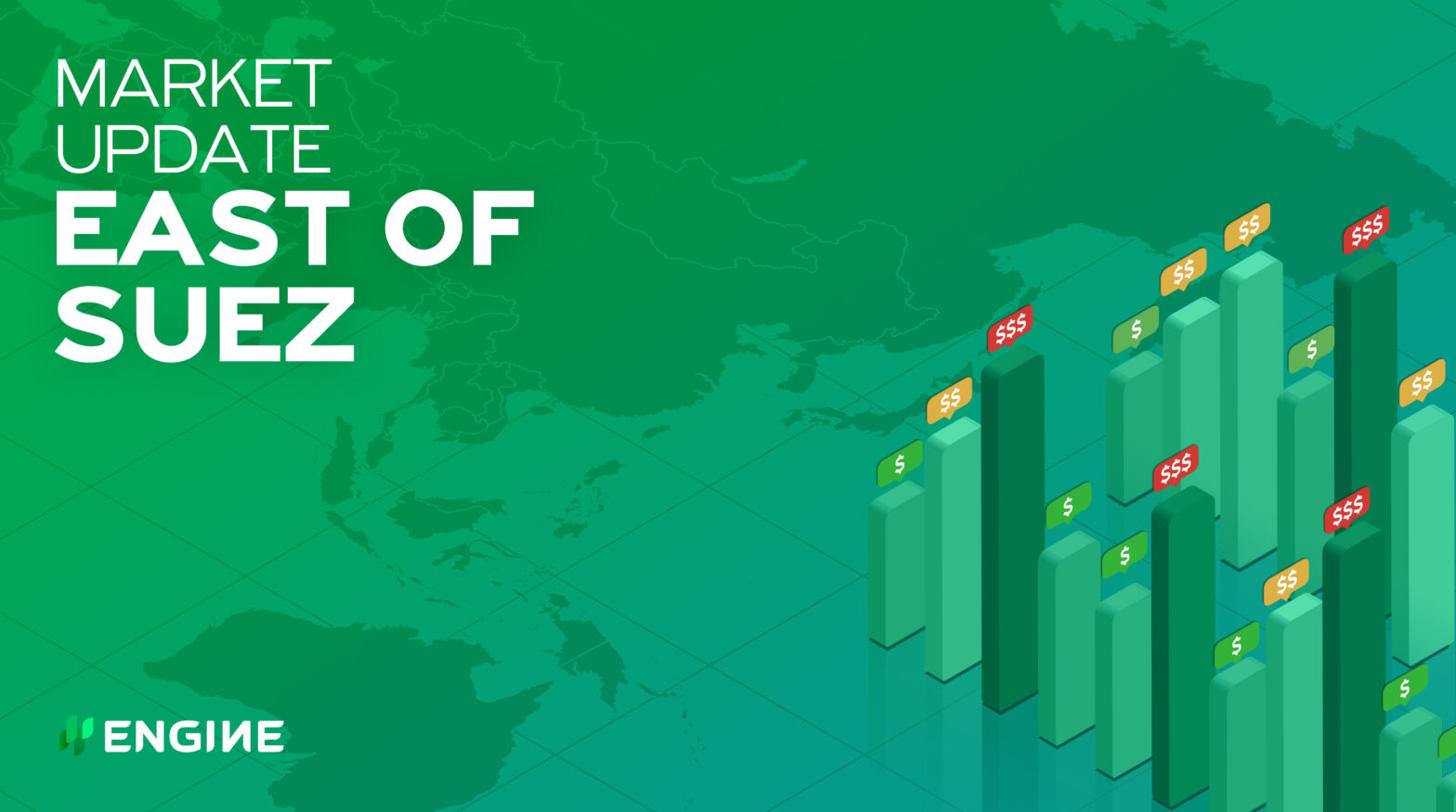Bunker prices have mostly recorded gains on the day, as Brent has rebounded after a three-day decline.
Changes on the day to 16.00 SGT (08.00 GMT) today:
- VLSFO price up in Fujairah ($10/mt) and Singapore ($4/mt)
- LSMGO prices up in Zhoushan ($14/mt), Singapore and Fujairah ($4/mt)
- HSFO380 prices up in Fujairah ($6/mt), and down in Singapore ($2/mt)
Singapore’s residual fuel oil stocks have added another 1% on the week even as net imports were cut in half, Enterprise Singapore data showed yesterday.
Despite more fuel oil in storage, Singapore’s bunker market continues to be very tight for another week. Recommended lead times for VLSFO supply stretch to 13 days, up from 11 days last week. Terminal congestion continues to be an issue in the bunkering hub, with delayed barge loadings after a Covid-19 outbreak two weeks ago.
Singapore’s HSFO380 inched down on the day, on the back of a lower-priced stem larger than 1,500 mt. HSFO380 availability remains tight in the port, too, with lead times steady on the week at 10-12 days, while LSMGO requires a shorter 6-7 days in advance.
Brent
Front-month ICE Brent has ended a three-day decline by gaining $0.67/bbl on the day, to $84.58/bbl at 16.00 SGT (08.00 GMT).
The futures contract is heading for its first weekly decline in two months, pressured down by growing US crude oil inventories and heightened expectations that Iran-US negotiations will resume next month.
After a gradual incline on the back of a widening global supply deficit since late August, Brent’s rally has run out of steam. Oil stocks have come under recent pressure from power plants switching away from natural gas amid widespread supply shortages and rocketing prices in Europe and Asia. Russia and China have intervened to cool red-hot gas and coal markets, respectively.
“The dip in crude prices will be temporary but could accelerate a little more if the natural gas prices correct even further. Part of the recent rally in crude came from expectations for added demand due to a shortage of natural gas,” says OANDA analyst Ed Moya.
In addition to next week’s COP26 summit, the market’s attention will be on the next instalment of OPEC+ talks on 4 November. Against a backdrop of crude prices at multi-year highs and calls to pump more oil, the group has so far stuck to its policy of limiting incremental output increases by 400,000 b/d in each month to April next year.
Experts advising OPEC+ came out with a slightly trimmed forecast yesterday, now expecting global oil demand to grow by 5.7 million b/d, down from its previous 5.8 million b/d forecast. A delegate from the OPEC+ Joint Technical Committee told S&P Global Platts they had seen “no major changes in supply and demand”, predicting the group to stay on its current course.
